Abstract
Surveillance of certain respiratory viral infections by applying immunofluorescence (IF) examinations to samples of nasopharyngeal secretions has been evaluated using a simplified procedure for the preparation of cell smears. Samples from 711 children living in different parts of Norway were examined during the winter 1982/83 and a positive diagnosis was made for 290 children (41%). Temporal epidemic peaks were observed for respiratory syncytial virus (RSV), parainfluenza virus type 3 and influenza virus. On the other hand, the monthly number of negative samples was almost constant throughout the period. Differences in timing of RSV outbreaks were observed between two regions in Norway. Compared to rapid IF diagnosis, RSV notifications obtained by serological examinations were delayed by several weeks. Rapid virus diagnosis by IF examinations with our simplified procedure for preparation of nasopharyngeal samples seems to be suitable for the epidemiological surveillance of respiratory viral infections, both for its simplicity of preparation of the samples and for its accuracy in defining the time of the actual virus infection. Nevertheless, the method is not without pitfalls; a close cooperation between those who take the specimens and the laboratory is essential, and the IF examinations should be performed by an experienced microscopist.
Full text
PDF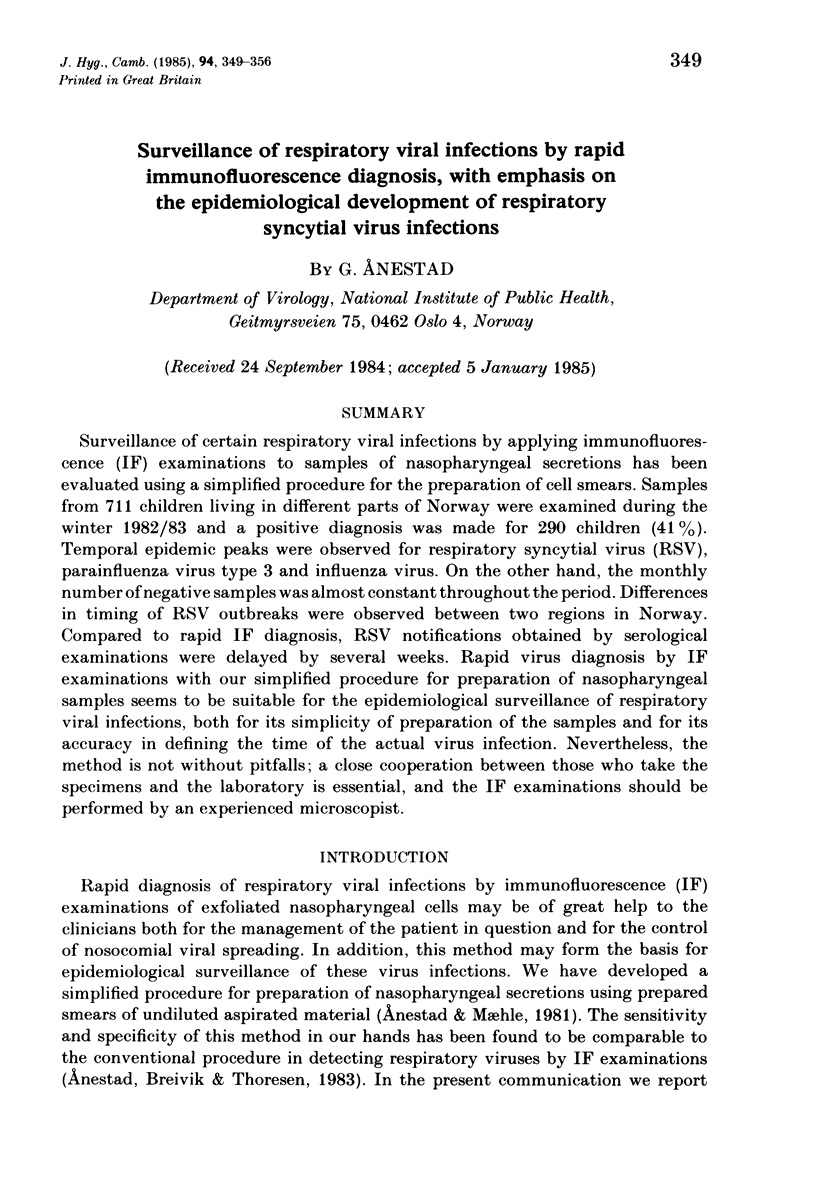
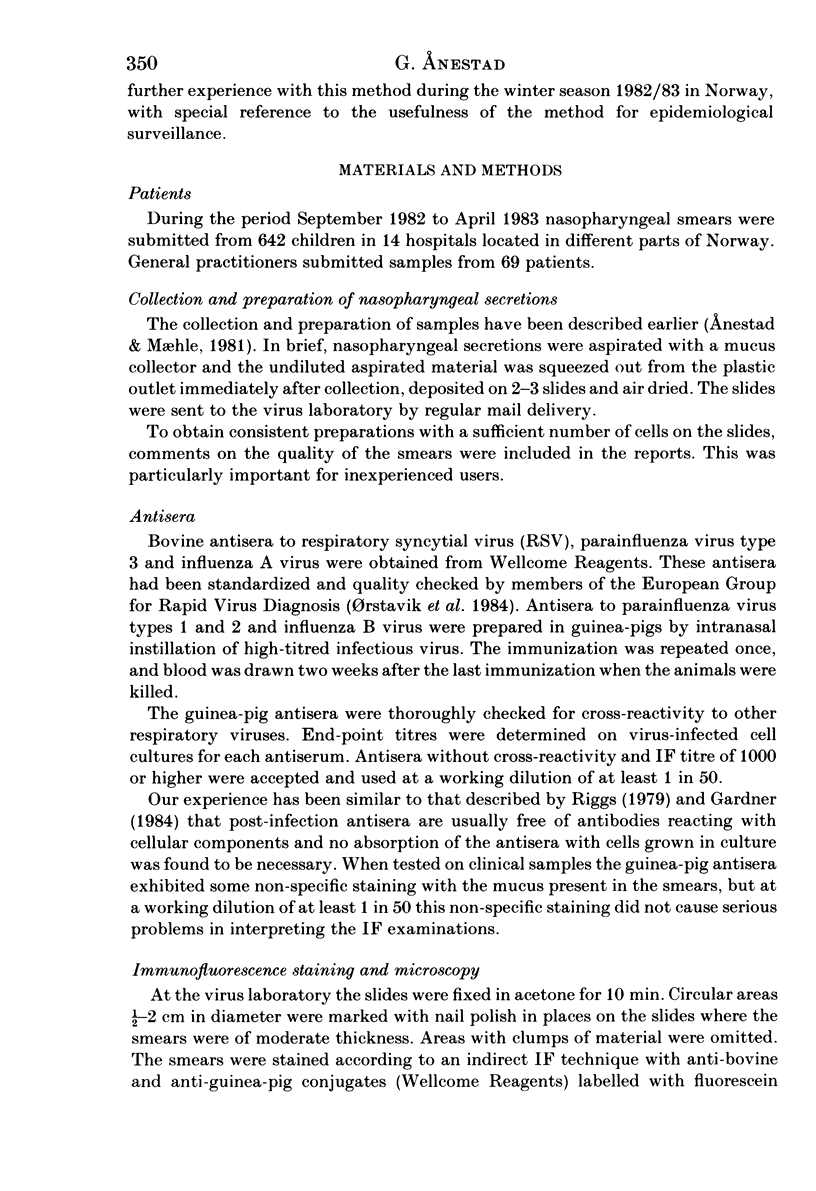
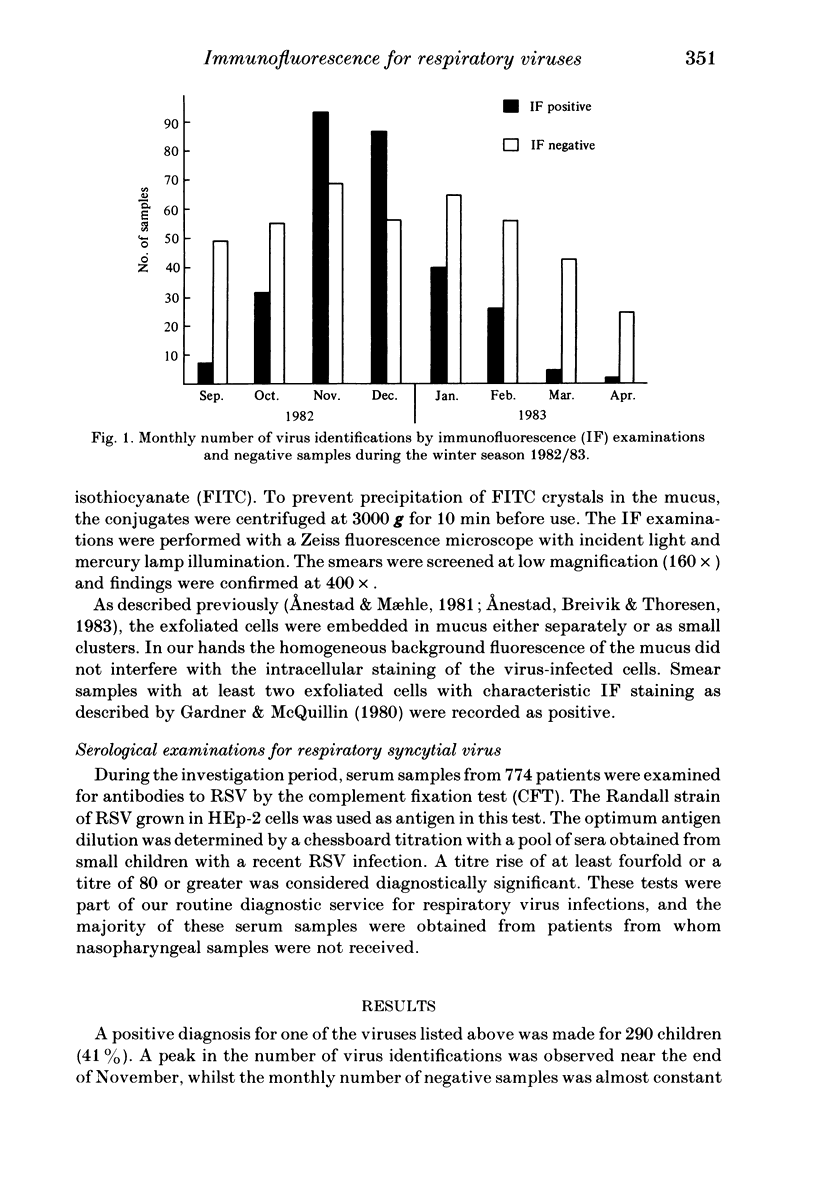

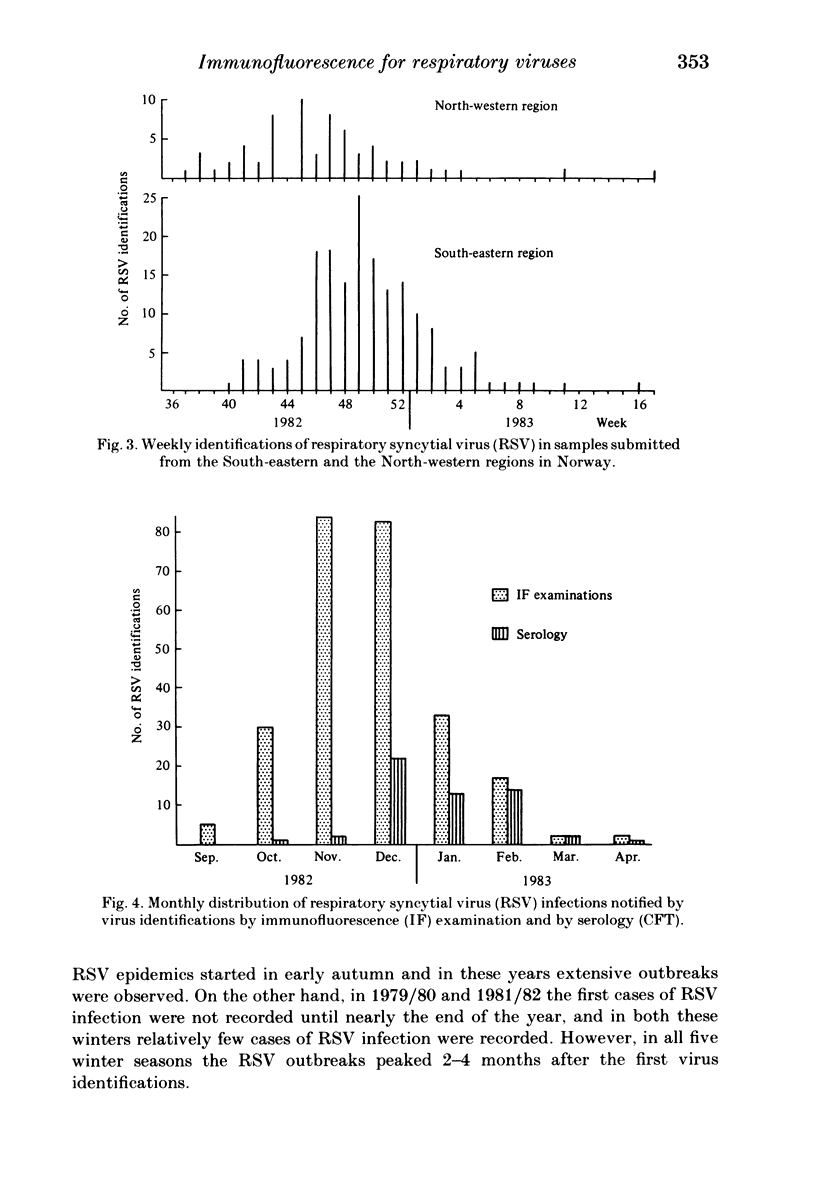
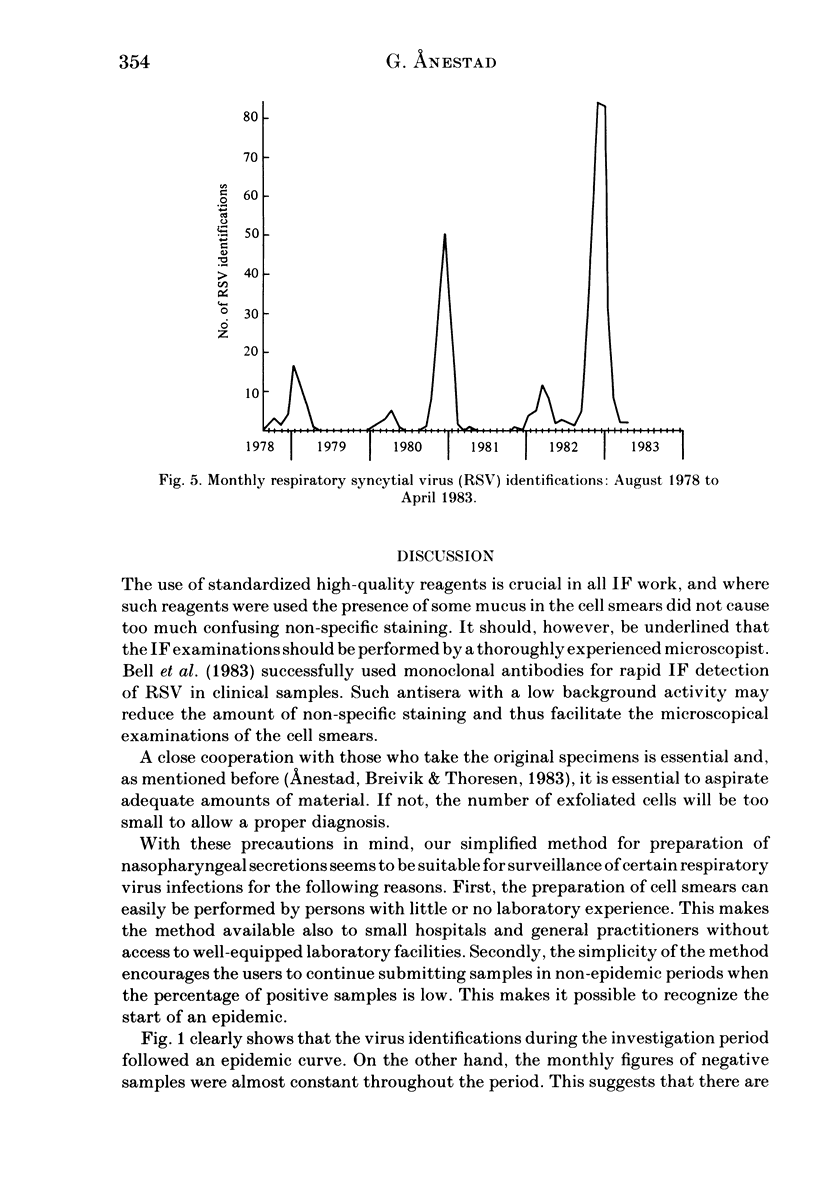
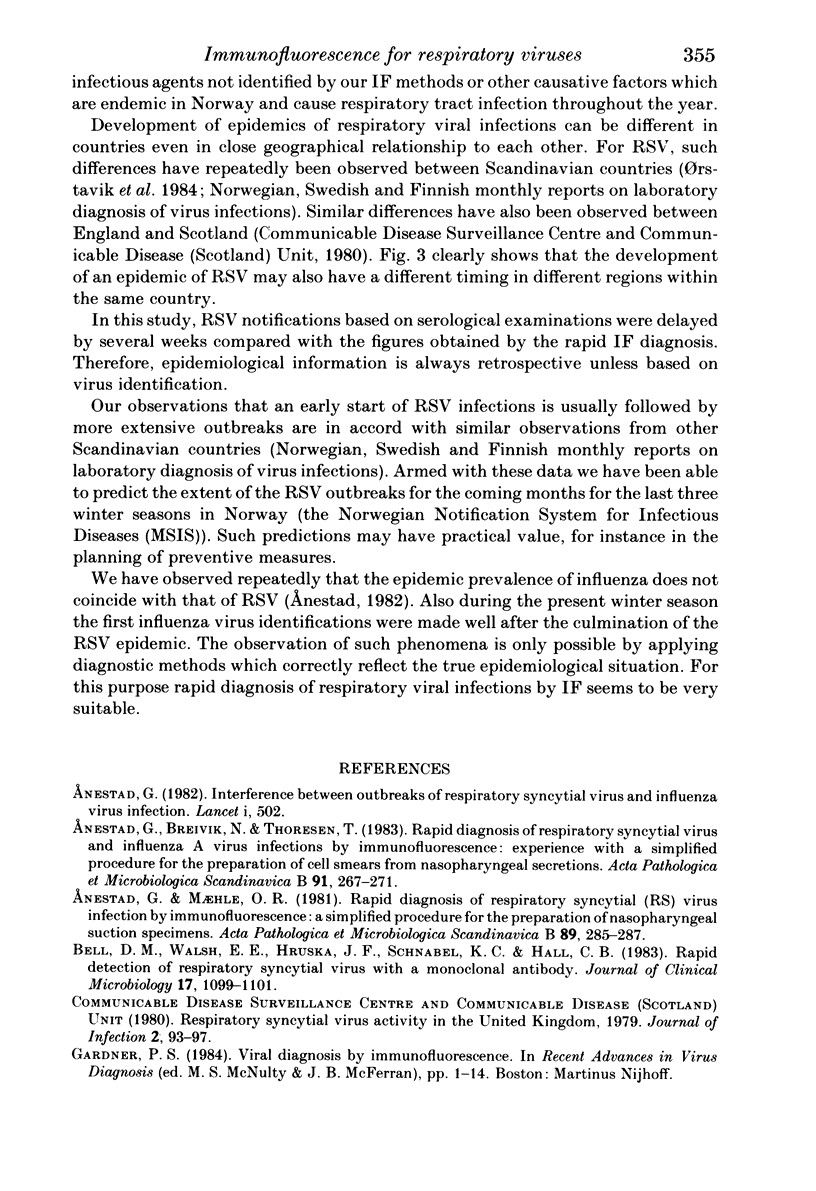
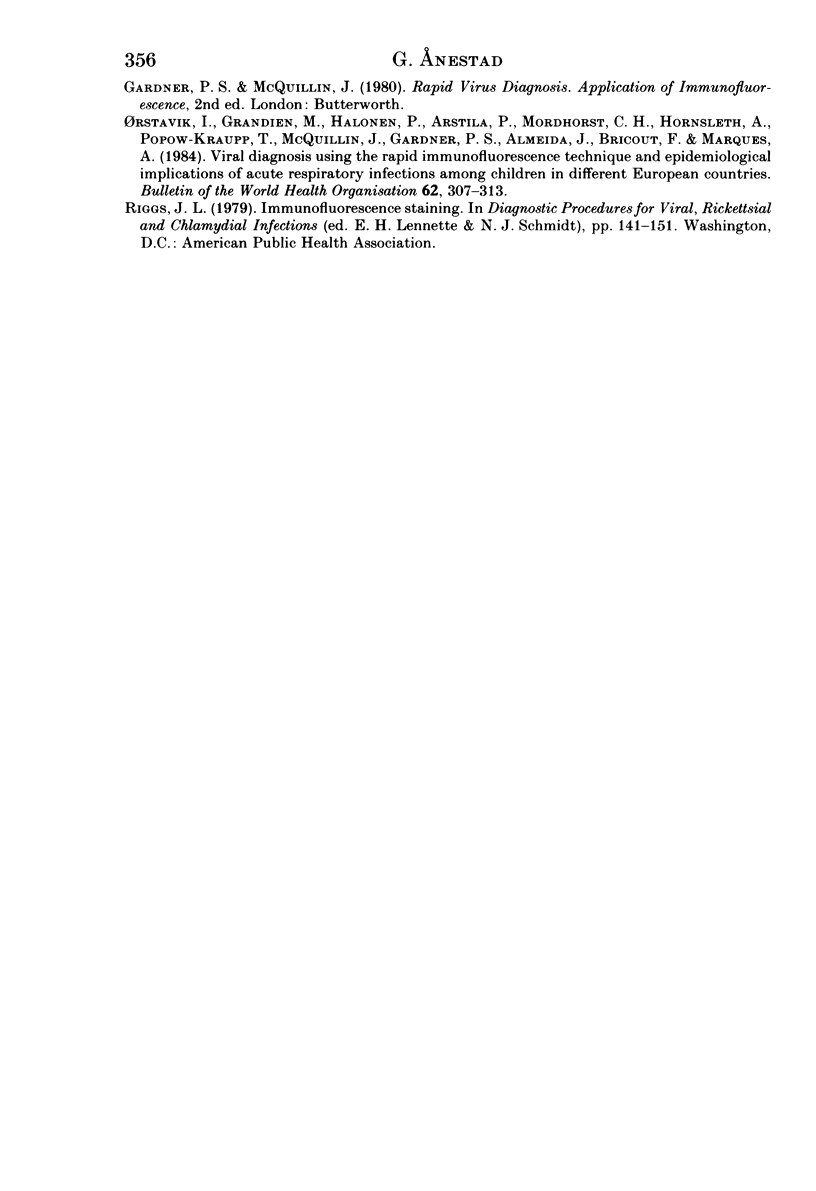
Selected References
These references are in PubMed. This may not be the complete list of references from this article.
- Anestad G., Breivik N., Thoresen T. Rapid diagnosis of respiratory syncytial virus and influenza A virus infections by immunofluorescence: experience with a simplified procedure for the preparation of cell smears from nasopharyngeal secretions. Acta Pathol Microbiol Immunol Scand B. 1983 Aug;91(4):267–271. doi: 10.1111/j.1699-0463.1983.tb00045.x. [DOI] [PubMed] [Google Scholar]
- Anestad G. Interference between outbreaks of respiratory syncytial virus and influenza virus infection. Lancet. 1982 Feb 27;1(8270):502–502. doi: 10.1016/s0140-6736(82)91466-0. [DOI] [PubMed] [Google Scholar]
- Anestad G., Maehle O. R. Rapid diagnosis of respiratory syncytial (RS) virus infection by immunofluorescence: a simplified procedure for the preparation of nasopharyngeal suction specimens. Acta Pathol Microbiol Scand B. 1981 Aug;89(4):285–287. [PubMed] [Google Scholar]
- Bell D. M., Walsh E. E., Hruska J. F., Schnabel K. C., Hall C. B. Rapid detection of respiratory syncytial virus with a monoclonal antibody. J Clin Microbiol. 1983 Jun;17(6):1099–1101. doi: 10.1128/jcm.17.6.1099-1101.1983. [DOI] [PMC free article] [PubMed] [Google Scholar]
- Orstavik I., Grandien M., Halonen P., Arstila P., Mordhorst C. H., Hornsleth A., Popow-Kraupp T., McQuillin J., Gardner P. S., Almeida J. Viral diagnoses using the rapid immunofluorescence technique and epidemiological implications of acute respiratory infections among children in different European countries. Bull World Health Organ. 1984;62(2):307–313. [PMC free article] [PubMed] [Google Scholar]


